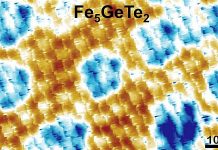
Once considered the simplest of all, the hydrogen atom consists of a proton and an electron.
However, recent scientific advances have revealed even simpler atoms that could redefine our understanding of the universe’s fundamental forces.
These simpler atoms include tauonium, an extraordinary atom composed of a tauon and its antiparticle, bound together solely by electromagnetic forces.
Tauonium stands out because of its incredibly small size and significant mass. It has a Bohr radius—a measure of size in atoms—of just 30.4 femtometers, making it about 1,741 times smaller than a hydrogen atom.
This tiny size makes tauonium a powerful tool for probing the principles of quantum mechanics and quantum electrodynamics at scales previously unexplored.
Until now, scientists had discovered only two types of these purely electromagnetic atoms: one formed by an electron and its antiparticle (positron) discovered in 1951, and another consisting of an electron and an antimuon, found in 1960.
Despite ongoing efforts, discovering new examples of such atoms has been challenging.
Recently, a groundbreaking study published in Science Bulletin proposed a novel method to detect tauonium.
This method involves analyzing data from collisions of electrons and positrons (particles of opposite charge) at high-energy particle colliders.
By focusing on specific collision events that produce tauon pairs and observing the accompanying neutrinos (nearly massless particles), researchers believe they can confirm the existence of tauonium.
The significance of this discovery would not just be in finding tauonium itself, but also in what it tells us about the universe.
For instance, the study suggests that this method could also refine the measurement of the tau lepton’s mass (a fundamental particle similar to an electron but much heavier) to an unprecedented precision—improving our understanding of the electroweak theory, a key component of the Standard Model of particle physics.
Such precision is crucial for addressing big questions in physics, like lepton flavor universality, which suggests that all types of leptons should interact with each other in the same way, regardless of their differences in mass.
The discovery of tauonium could soon be realized with projects like the Super Tau-Charm Facility in China or the Super Charm-Tau Factory in Russia.
These facilities aim to operate at conditions optimal for tauon pair production, potentially leading to the detection of tauonium by running experiments continuously for a year.
This exploration is not just about finding a new type of atom; it’s about unlocking the secrets of the material world on the smallest scales, and possibly uncovering new laws of physics that could change our understanding of the universe.



